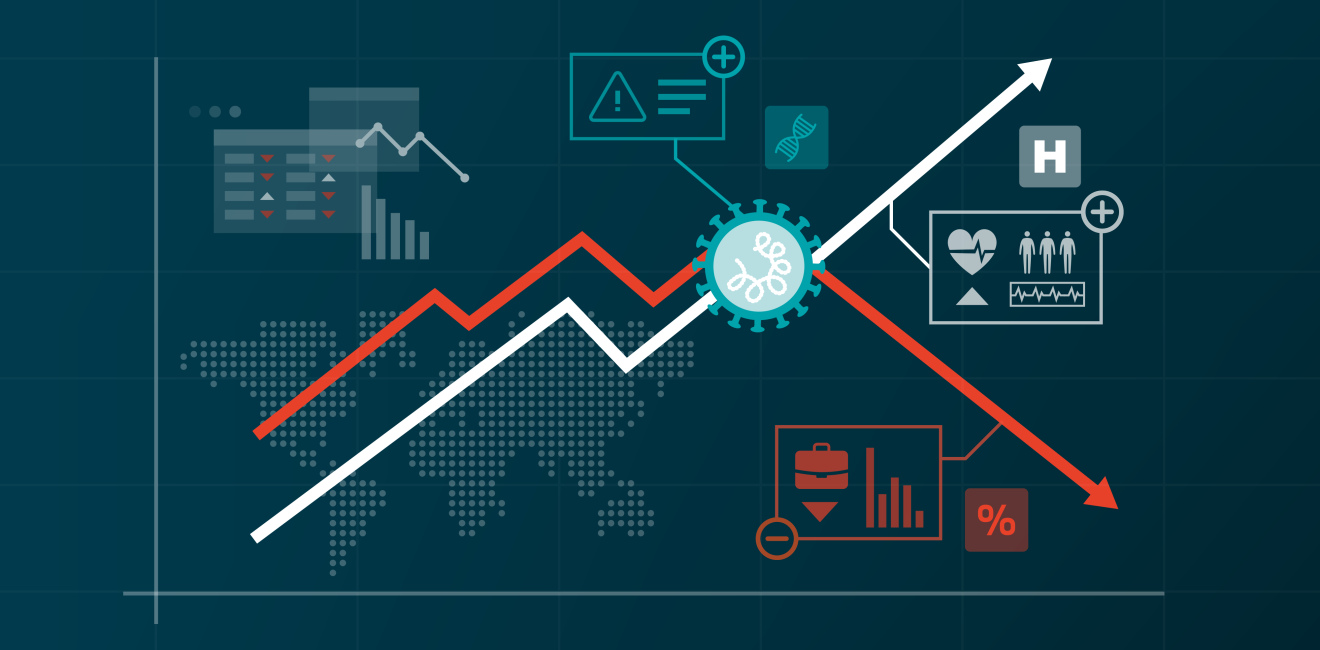The Covid-19 pandemic has already claimed thousands of lives in the United States and Canada; it poses a grave threat to millions more. But the virus is more than a public health emergency. It has also attacked the economies of both countries, resulting in massive unemployment and leading to pervasive uncertainty as individuals ponder their financial security.
Governments on both sides of the 49th parallel have responded to the shocks reverberating through financial markets and the real economy. Not since the global financial crisis a little more than a decade ago have policymakers acted with such resolve. The Federal Reserve and the Bank of Canada have cut interest rates and resurrected crisis-era facilities designed to provide liquidity to markets caught in a fevered rush to safe assets and prevent destructive asset price fire sales. They have done so on a greatly accelerated schedule, however. In effect, the two central banks have packed 18 months of policymaking in the global financial crisis into a mere four weeks.
Meanwhile, Washington and Ottawa have opened the fiscal taps to support furloughed workers and firms at risk of bankruptcy because of efforts to break the virus’ chain of transmission. When the “all clear” is sounded, deficits and debt levels will be much higher. Perhaps the closest historical analogue is the mobilization and transformation of the North American economy into the Arsenal of Democracy in World War II. Then, government spending put millions to work producing the armaments and material needed by those serving overseas. Today, government spending is supporting millions laid off as they serve by staying home.
The objective behind the suite of policies adopted by the US and Canadian governments, whether Washington’s Paycheck Protection Program of forgivable loans or Ottawa’s wage subsidies, is to preserve the value of firm-specific relationships between firms and their workers and firm’s and their suppliers. With luck, these extraordinary policy responses will assure a rapid recovery once social distancing measures are relaxed. A robust bounce back in economic activity is likely. But that felicitous scenario is not assured; significant risks to long-term prosperity remain.
Three factors could impair a rapid recovery. The first is a risk of widespread bankruptcies and disruption to international and domestic supply chains if the crisis extends beyond the limits of existing support programs. Such a scenario is highly problematic in that existing bankruptcy frameworks in both countries—Chapter 11 in the US or the Companies’ Creditors Arrangement Act in Canada—are designed to deal with creditor coordination failures with respect to individual firms; not systemic business failures in which the liabilities of an insolvent firm are the receivables of otherwise solvent firms. Individual creditors, and bankruptcy frameworks, do not factor in the potential externalities of increasing the likelihood of financial distress of other firms in enforcing past due claims. The result could be too many bankruptcies from a social perspective that disrupts production and impedes economic recovery. Mitigating this potential risk should be a priority.
The second factor threatening long-term American and Canadian prosperity is the depreciation of the human capital of recent graduates whose professional lives are put on hold by the crisis. The longer that these individuals are forced to wait before applying the skills and knowledge they have learned, the more their human capital is degraded. This outcome would have profound consequences for the individuals concerned, whose lifetime earnings are reduced. It would also have broader societal effects in the ideas, innovation and dynamism that are lost. Economic growth could suffer. Government departments in both countries should therefore be hiring graduates, putting them to work researching solutions to the challenges that lie ahead. If young researchers are hired by private industry once the economy recovers, so much the better.
Unintended consequences of border restrictions on non-essential traffic are the third, and likely greatest, threat to economic recovery. No one disputes the need for extraordinary measures to contain cross-border spread of the virus. Moreover, the joint border restrictions Washington agreed to with the Mexican and Canadian governments are a positive step back from the alternative—unilateral action that would undoubtedly have led to enormous dislocation. But by leaving the definition of “essential” unclear, governments have generated unhelpful uncertainty regarding production supply chains. Relaxing social distancing restrictions to restart the economy will be less effective if production is disrupted by broken supply chains as trucks idle at the border or are blocked entry. This is a North American issue, and all three governments should be working to strengthen existing trusted shipper/trader programs to address potential problems before they threaten the rapid recovery millions are counting on.
The Covid-19 pandemic is first and foremost a global public health emergency. But it also threatens economic prosperity as output collapses and unemployment soars. Managing and mitigating the three risks to a rapid recovery identified above is critical to containing these costs and sustaining shared prosperity.






